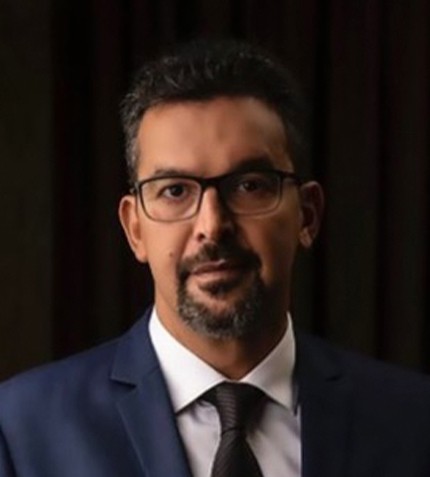
"The company is exceptionally proud that we have an all-Namibian leadership team within Namibia."
Joe Walsh
MANAGING DIRECTOR, LEPIDICO
Can you give an update on Lepidico’s activities over the past year?
Lepidico has completed front-end engineering and design and we have started the detailed design and engineering phase for our integrated project, where we are redeveloping two open pit mines at Karibib in Namibia for their lithium potential, and building a new mineral concentrator that produces a lithium mica concentrate for export. This export product will be shipped to Abu Dhabi where we are building our proof of commercialization chemical conversion plant, which will convert the lithium mica concentrate into lithium hydroxide, along with cesium and rubidium which are also on the US government's critical minerals list, and three saleable bulk byproducts: SOP fertilizer, an amorphous silica which goes into construction, and a gypsum residue. Extracting these six products means that our chemical conversion facility will produce no solid process waste, making it an extremely sustainable process. This plant will be the first of its kind, and we have done an enormous amount of work to develop and de-risk the process technology through four successively larger pilot plant trials. The upstream feedstock will be coming from the brownfield open-pit Karibib mines in Namibia where we are fully permitted. As part of our development process, we have also done the first-ever closure plan for these sites, and our environmental social impact assessment concluded that our activities will ultimately be improving the environment as we will be rehabilitating the historical industrial legacy.
What are Lepidico’s objectives with its chemical conversion plant?
Lepidico has a well-developed five-year strategic plan for the business, and we are now in the second year of the current plan. The centerpiece of the strategy is to get to free cash generation as quickly as possible, and in doing so, demonstrate the commercial viability of our process technologies. This will give us a platform to be able to grow the business further. We know that the mineral concentrator in Namibia readily lends itself to expansion, and we are already working on expanding our resource base in the Karibib region to support that expansion. For this additional mineral inventory, we are also already looking at a phase two chemical plant where we currently have two concepts. The first is a sister plant to the one that we are building in Abu Dhabi at a similar scale of approximately 5,000 t/y of lithium hydroxide output; or a larger plant that has a capacity of up to 20,000 t/y. Realistically, to be able to achieve that, we would need to secure other third-party sources of lithium mica concentrates. Having a larger phase two plant would see Lepidico developing the world's first global market for lithium mica concentrates outside of China.
Is Lepidico still on route to producing lithium mica concentrate by 2025?
The goal is to start production by 2025, but the critical part of the project now is securing funding to start construction of both the concentrator and chemical plant. We have a binding offtake agreement for our lithium hydroxide.
What does Lepidico’s project bring to nearby communities in terms of socio-economic impacts?
The company is exceptionally proud that we have an all-Namibian leadership team within Namibia. This is a testament to there being excellent technically skilled and experienced people within the country. Within the communities, we expect to be employing approximately 120 people directly. We have also committed significant capital to develop a new maternity clinic in the nearby town of Otjimbingwe. Our most important stakeholders are the local communities as they are our license to operate, and as such we consult with them directly to be able to best support them. We have water extraction rights for the mine, and for the past five years, we have been providing water to local farmers, which makes an enormous difference given the relatively marginal land that they are farming.
Can you speak to the operating environment in Namibia?
Namibia has an established mining industry which in large part has been developed by large, diversified groups. The country has a well-functioning Chamber of Mines, and there is a robust mining law. Namibia has a reasonable landmass, but a tiny population of approximately 2.6 million people. As a result, there is just not the population to support a burgeoning bureaucracy, which is often what you see in large population countries and can impede access to government and getting approvals, etc. In Namibia, we have good access to government and decision-makers within the ministries.










